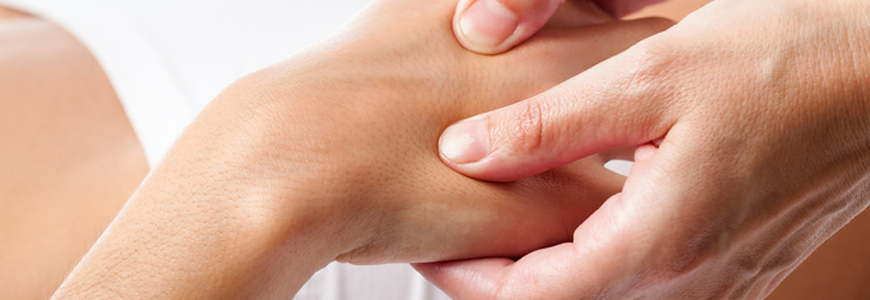Patients with arthritis in their knees experienced significant improvement in pain and mobility after undergoing a weekly, whole-body massage for two months, according to a study led by researchers at Duke Health.
The finding, appearing online in the Journal of General Internal Medicine, suggests that massage could offer a safe and effective complement to the management of knee osteoarthritis, at least in the short term.
“Osteoarthritis is a leading cause of disability and affects more than 30 million people in America,” says lead author Adam Perlman, MD, MPH, program director of the Leadership Program in Integrative Healthcare at Duke University School of Medicine. “Medications are available, but many patients experience adverse side effects, raising the need for alternatives. This study demonstrates that massage has potential to be one such option.”
Perlman and colleagues at four institutions enrolled approximately 200 patients with a diagnosis of knee osteoarthritis. Patients were randomly divided into three groups: those who received a one-hour, weekly Swedish massage for eight weeks; those who received a light-touch control treatment; and those who received no extra care other than their usual regimen.After eight weeks, each of the groups were again randomized to continue with massage or light-touch every other week, or to receive no treatment for the remainder of the study, which spanned 52 weeks.
Patients were assessed every two months using a standardized questionnaire (the Western Ontario and McMaster Universities Osteoarthritis Index). The questionnaire measures pain, stiffness, and functional limitations, including how well patients can climb stairs, stand up from sitting or lying down, bend, walk, or get out of a car, among other activities.
At eight weeks, massage significantly improved patients’ scores on the questionnaire compared to light-touch and usual care. Massage reduced pain and stiffness and improved physical function.
At 52 weeks, the twice-monthly massages maintained the improvements observed at eight weeks, but did not provide an additional benefit. There were no significant differences among the groups at 52 weeks.
“Massage therapy is one of the most popular complementary medicine interventions,” Perlman says. “At a time when people are looking for effective non-medication options for pain, this study provides further evidence that massage has a potential role, at least for those suffering with osteoarthritis.”

